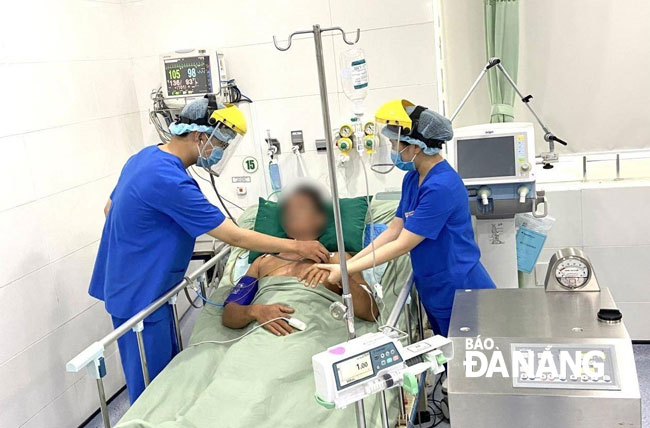Patient with over 60- minute respiratory arrest saved
Doctors from the Hoan My Da Nang Hospital have just successfully saved the life of a patient suffering from a heart attack and cessation of breathing for more than 60 minutes.
 |
| After 2 days of intensive treatment, the patient is expected to be discharged from the hospital in the next few days. Photo courtesy of the Hoan My Da Nang Hospital |
Previously, late on June 18, the 51-year-old man living in Hoa Minh Ward, Lien Chieu District was rushed to the emergency room in a state of severe chest pain and cessation of breathing.
The hospital immediately activated the emergency model of in-hospital respiratory arrest and emergency treatment for the patient with acute myocardial infarction.
Emergency crews conducted circulatory and respiratory resuscitation, continuous external chest compressions, electroconvulsive therapy, mechanical ventilation and vasopressor on the patient.
After more than 60 minutes, the patient's heart rate returned to normal. The emergency team simultaneously consulted with cardiologists and diagnosed the patient with acute myocardial infarction.
The patient was then transferred to the interventional cardiology room for coronary angiography and intervention using the stent grafting technique.
After the intervention, the patient was still on mechanical ventilation, fell in a coma and transferred to the Intensive Care and Anti-Poison Unit.
Here, the doctors decided to apply the technique of hypothermia, lowering the patient's temperature to put him in a ‘hibernation’ state to protect his brain and reduce mortality and neurological sequelae after circulatory arrest.
According to doctor Pham Huu Huyen, Head of Intensive Care and Anti-Poison Unit, acute myocardial infarction has a very high mortality rate despite being treated in the hospital.
The saving of this patient's life is mainly attributed to the fact that the hospital gave the timely activation of the emergency model of in-hospital respiratory arrest and acute myocardial infarction, combined with advanced technology.
After 2 days of intensive treatment, the patient has weaned from mechanical ventilation and vasopressors. He is expected to be discharged from the hospital in the next few days.
Reporting by PHAN CHUNG – Translating by A.T